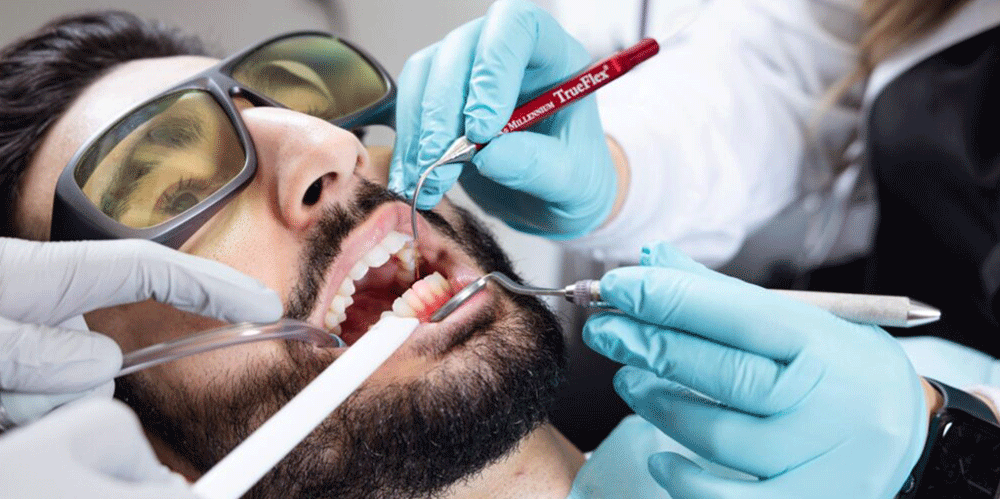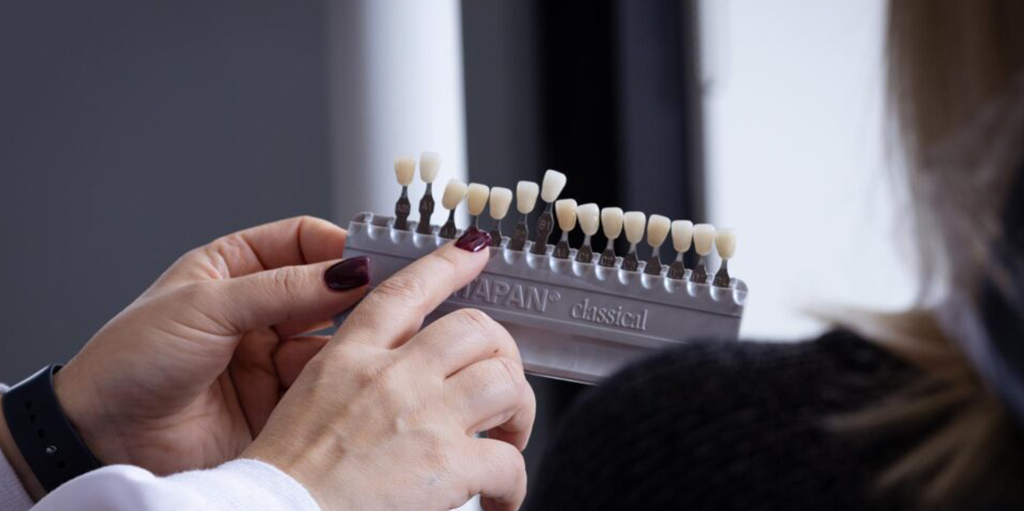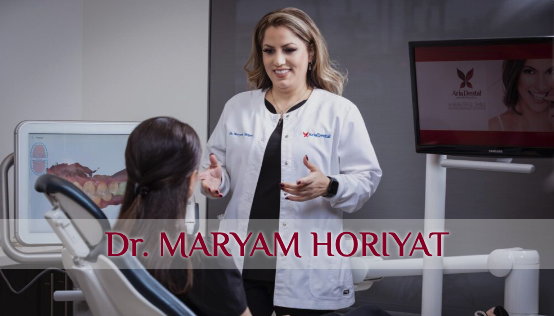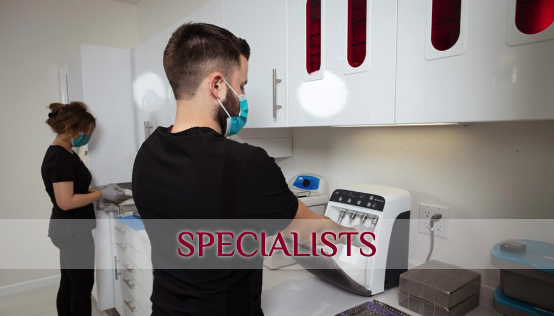Holistic Treatments for Gum Disease
An Integrative Approach to Oral & Systemic Health!
Rebalance Your Gum & Your Health!
Minimal Invasive Non-Surgical or Surgical Gum Therapy with Ozone Therapy & Laser
If you have periodontal (gum) disease, you are not alone. According to recent findings from the Centers of Disease Control and Prevention (CDC), one of the most common dental conditions experienced by millions of Americans is gum disease. CDC also announced that gum disease increases COVID-19 mortality rate by 9X.
Periodontal (gum) treatments at our holistic and biological dental practice with innovative technology can not only save you from severe dental damage and tooth loss, but it may also help reduce the risks of developing overall health problems that can be attributed to gum disease.

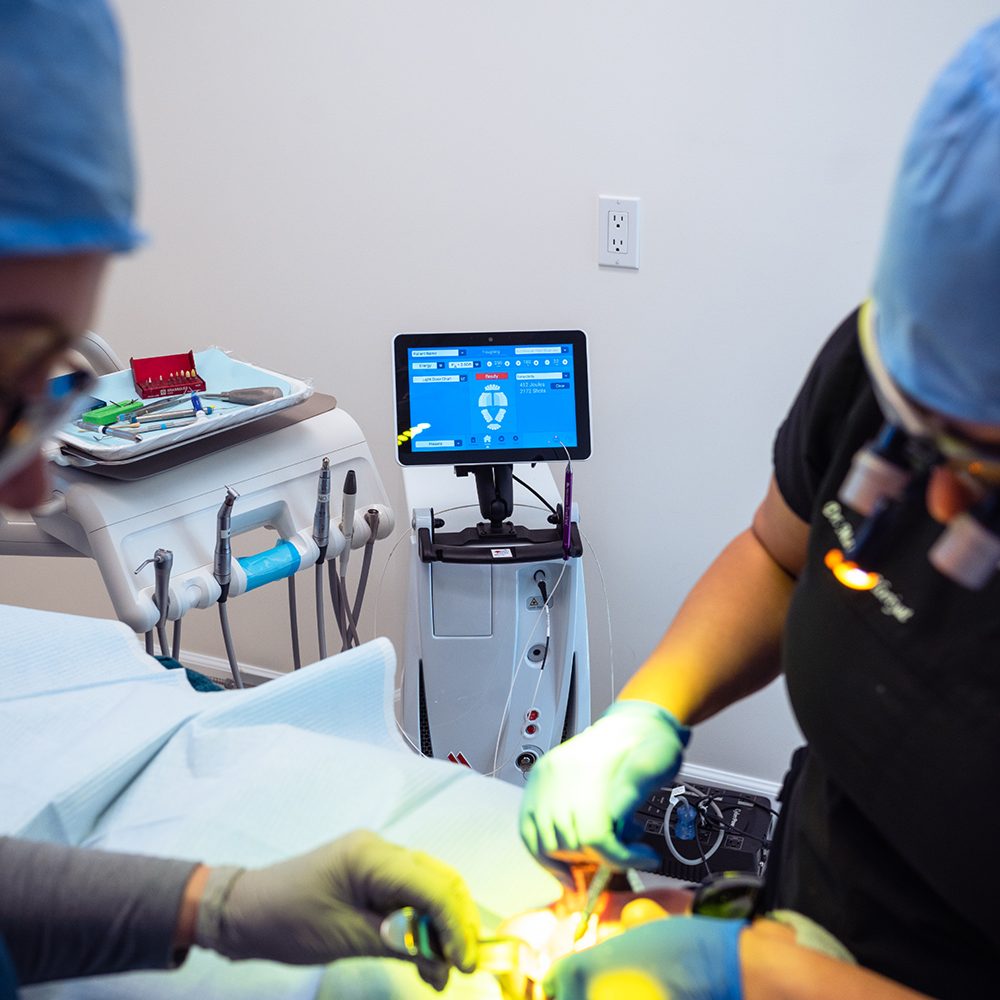


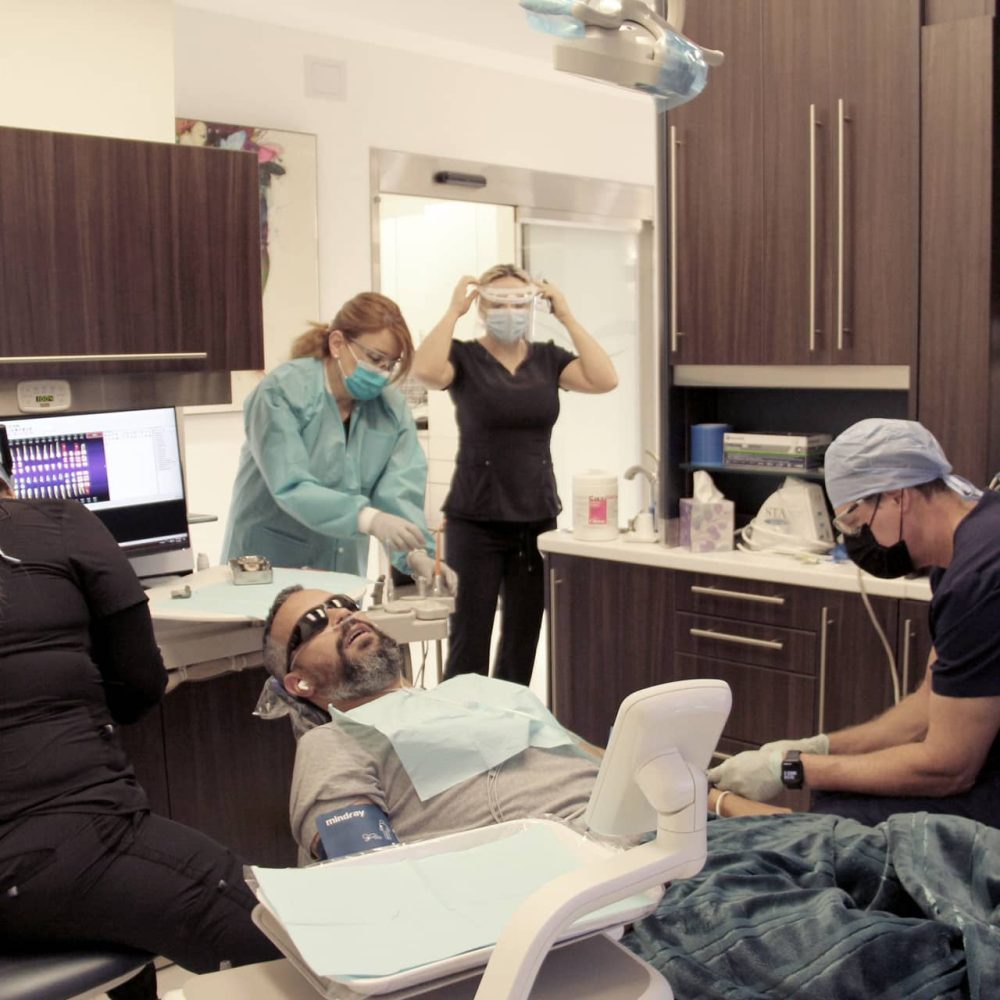





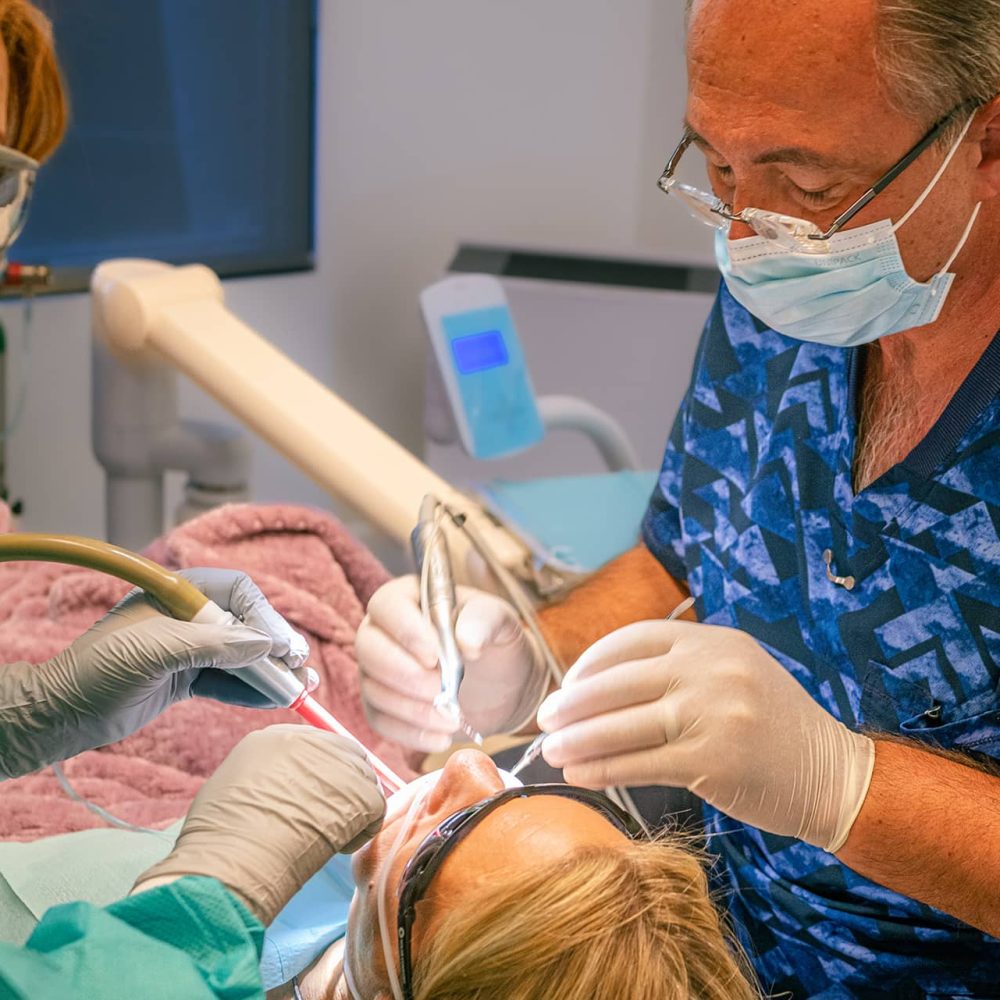

Gum Disease Overview
The gums are a complex system containing the bone, ligaments, and soft tissue to hold your teeth. This complex system is also referred to as the periodontium. When the periodontium is not healthy due to plaque and bacteria building up over time, it can cause tooth and gum damage, which ultimately could result in tooth loss and loss of bone in your jaw and skull. It can also put you at a serious health risk such as heart attack, diabetes, respiratory infections, and stroke because it is connected to the rest of your body via the blood vessels that carry valuable nutrients to your mouth. The stages of periodontal diseases range from simple inflammation (gingivitis) to severe periodontitis that results in major damage to the soft tissues and bone that support the teeth. In the worst cases, teeth are lost.
Healthy Gum Vs. Gum Disease
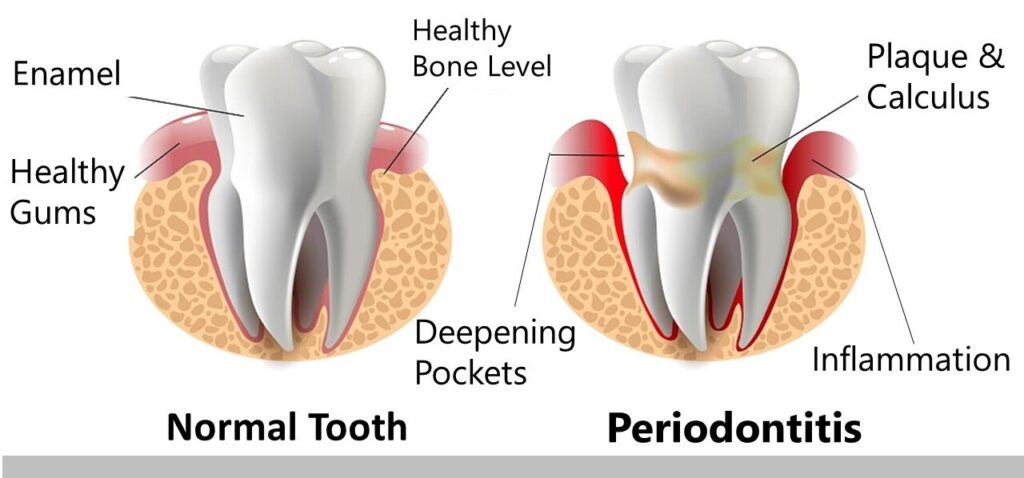
Stages of Periodontal Diseases
The Stages of periodontal diseases range from simple gum inflammation or redness to severe gum disease that results in major damage to the soft tissue and bone that support the teeth. In the worst cases, teeth are lost.
Whether your gum disease is stopped, slowed, or gets worse depends a great deal on how persistent you show up to your perio-maintenance appointments at Aria Dental and how well you care for your teeth and gums every day.
stages of gum disease & pocket depth
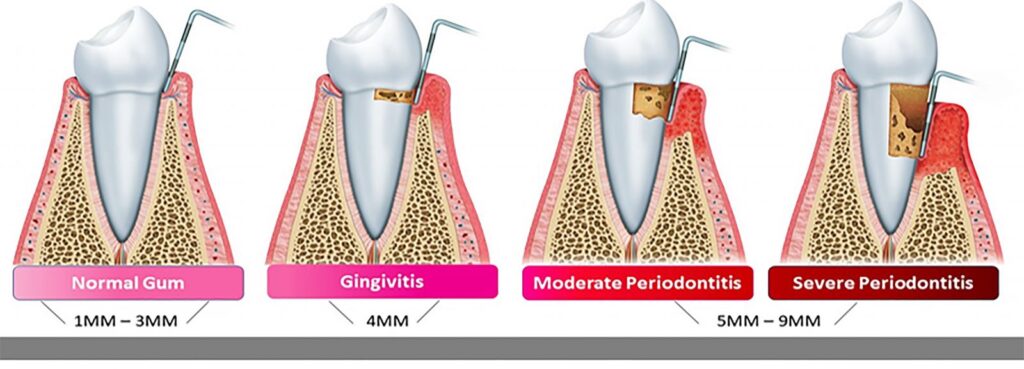
Gingivitis
In its early stage, gum disease is often referred to as gingivitis, an infection of bacteria in the gums caused by plaque buildup on teeth. If plaque isn’t properly removed, it will build up at the gum line and can result in inflammation of the gums. Gingivitis is a condition that needs to be addressed immediately at the first sign of a problem; It is characterized by swollen, red, bleeding, or receding gum. If left untreated, it can lead to severe periodontitis (periodontal infection), which could ultimately lead to gum surgery or destroy the bone surrounding your teeth and may cause you to lose your teeth. Aria Dental utilizes the latest technique and proven ways to help our patients to eliminate gingivitis and associated chronic inflammation. The treatment usually involves deep cleaning or root planning along with local antibiotic agents. ozone therapy, or gum laser treatments.
Periodontitis
Destructive Inflammatory Disease Periodontal (Gum) disease is the natural progression of gingivitis. Periodontal disease is a hidden danger, not only to your teeth but also to your overall health because it is virtually pain-free. Periodontitis is the leading cause of tooth loss in adults. According to recent findings from the Center for Disease Control and Prevention (CDC), half of American aged 30 or older have periodontitis. This equals approximately 64.7 million Americans. Your daily oral hygiene routine is your best defense against periodontal disease, but if you suffer from bleeding gums, receding gum, or loose teeth due to any form of gum disease, you need to immediately receive professional dental care. Although it cannot be cured, gum disease can be controlled with dental treatments such as gum therapy, ozone therapy, and Periolase LANAP®.
Do You Know What Type of Gum You Have?
Factors Affecting the Development of Gum Disease
Have you ever wondered if you were at risk for gum disease? Maybe you’ve never thought about it, but there’s a chance you have one or more factors that could be putting you at risk. Gum disease is a progressive condition that begins with symptoms many disregards as normal. Tender. red, and bleeding gums are the first sign of gingivitis . as the disease progresses, gums become more damaged, pulling away from the teeth, which can become loose and even fall out. knowing the common risk factors for gum disease, however. can help prevent this condition for harming your smile and health.
Smoking & Tobacco
Plaque Buildup
Systemic Disease
Misaligned Teeth
Nutritional Deficiencies
Grinding & Clenching
Hormonal Shifts
Medication Use
Family History
How to Prevent Gum Infection?
Healthy Diet & Cutting Back on the Unhealthy Foods
Holistic Home Remedies
Maintain Good Oral health at Home
Visit Your Holistic Dentist & Hygienist Regularly
Signs of Gum Diseases
Early Signs of Gum Disease
- Red Gum & Tooth Discoloration
- Bleeding During Brushing & Flossing
- Persistent Bad Breath or Foul Taste
- Pain & Sensitivity
- Teeth Shifting or Change in Bite
- Pus Discharge
- Enlarged Gum Pockets
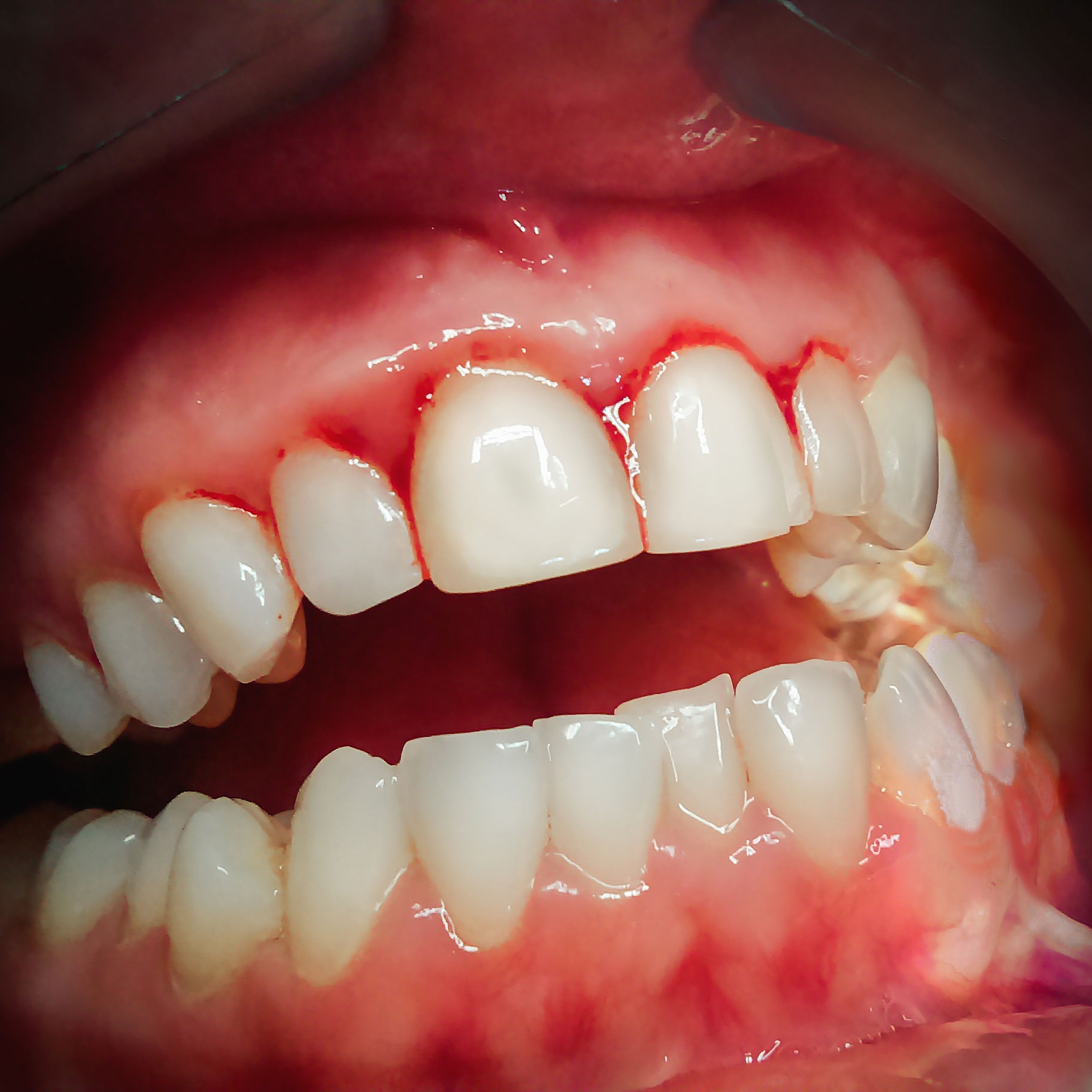
Spread of Problems That Start in the Mouth to the Rest of Your Body
Gum infections may increase the risk of many diseases, including
- Hearth Disease
- Stroke
- Lung Disease
- Problem in Pregnancy
- Complications Related to Diabetes
- Alzheimer's Disease
- Autoimmune Diseases
The Link between Gum Disease & Covid-19 Mortality
The study published in the journal of Clinical Periodontology revealed that COVID -19 patients with gum disease (periodontitis) were not only more likely to die, but also 4.5 times more likely to require ventilator, and 3.5 time more likely to be admitted to intensive care. The study reports periodontitis shares common risk factors with most chronic inflammatory disease known to influence the severity of COVID-19.
Periodontal Treatments
Have you ever wondered if you were at risk for gum disease? Maybe you’ve never thought about it, but there’s a chance you have one or more factors that could be putting you at risk. Gum disease is a progressive condition that begins with symptoms many disregards as normal. Tender. red, and bleeding gums are the first sign of gingivitis . as the disease progresses, gums become more damaged, pulling away from the teeth, which can become loose and even fall out. knowing the common risk factors for gum disease, however. can help prevent this condition for harming your smile and health.
Periodontal Treatment Options & Why Is It Important?
Periodontics is the branch of dentistry that focuses on the health of bones and tissues that support your teeth. Regular visits with Dr. Maryam Horiyat at Aria Dental of Mission Viejo will maintain the health of these vital structures. If any signs of gingivitis or gum disease are seen, she may recommend preventive care steps, so the condition does not worsen. If signs of advanced periodontal disease are present, Dr. Horiyat can create a personalized treatment plan for you. The main goal of treatment is to control the infection. The number and type of treatments will vary, depending on the extent of the gum disease. Any type of treatment requires that the patient keep up good daily care at home. The doctor may also suggest changing certain behaviors, such as quitting smoking, to improve treatment outcomes.
The Stages of Periodontal Diseases
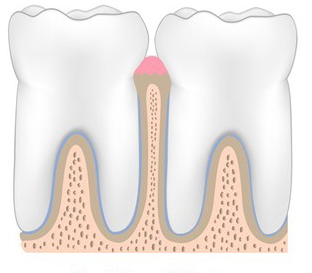
1. Healthy

2. Gingivitis
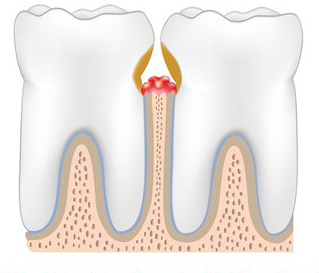
3. Periodontal Pocket
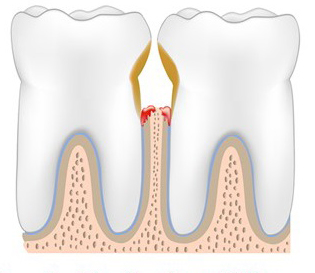
4. Periodontitis
Non-surgical Gum Therapy
(Mild to Moderate Gum Disease)
This type of cleaning is performed when a regular teeth cleaning is not enough. It is usually used for people who have put off dental visits or teeth cleaning for a while and have a significant buildup of plaque and tartar. During a gross debridement, plaque is first removed with a scaler tool. Since tartar is hardened, a special electric tool is usually required to loosen and remove tartar from the teeth. Once this is complete, a regular prophylaxis cleaning will be performed.
Periodontal maintenance cleaning is recommended for those who had a history of gum disease; it helps patients to maintain healthy teeth and gums long-term. Periodontal maintenance cleaning involves a careful inspection and a thorough cleaning to prevent gum disease. This includes:
1. Inspection: Teeth x-rays & visual examination of the mouth
2. Subgingival Cleaning: Calculus is removed along and under the gumline.
3. Supragingival Cleaning: Dental scaling tools are used to clean the area of teeth that is visible above the gum line.
4. Root Planing: The root of the teeth is gently smoothed to remove any remaining bacteria that persists.
Oxygen/ozone therapy is a holistic and natural treatment that safely and significantly reduces oral harmful microorganisms such as bacteria & fungus. Gum disease can be arrested without the use of pharmaceutical drugs and their associated side effects. There are different applications for ozone therapy: Ozonated Water, Ozonated Oils & Ozonated Gas while applying oxygen/ozone directly into the infected gum pockets.
Arsenicum Album – For bleeding and unhealthy gums.
China – For bleeding gum tissues
Ferrum Phosphoricum – For poor gum tone or gums that bleed after brushing.
Hypericum – For tender gum tissue and to promote healing.
Kali Chloricum – For acute ulcerative tissue.
Naturium Muriaticum – Tissue integrity.
Hepar Sulphuris – Tissue with suppuration, chronic abscesses.
Silicea – Periodontal abscess with swollen glands.
Staphysagria – Loose teeth while pain is increased by pressure.
Symphytum – Injuries to the periosteum. Stimulates growth of epithelium on ulcerated surfaces.
Mercurius Solubilis – For acute ulcerative tissue with a coated tongue and metallic taste in the mouth.
Nux Vomica – For swollen painful gums when the back of the tongue has a whitish coating and when the patient consumes a lot of stimulants such as coffee and tea.
Phosphorus – For swollen gums that bleed easily, and when saliva is overproduced.
Treat you beyond your dentist visit but like any other medication, they come with side-effects
Arestin® (Minocycline HCL) Microspheres is a concentrated antibiotic that remains active in your gum pocket for an extended period to reduce pocket depth by targeting periodontal bacteria to fight infection and ultimately helping your gum to heal. Arestin is incorporated into a routine oral maintenance program along SRP.
Medications may be used with treatment that includes scaling and root planning, but they cannot always take the place of surgery. Depending on how far the disease has progressed, Dr. Horiyat and her team of board-certified periodontists may still suggest surgical treatments.
The Perio Tray® by Perio Protect was developed to supplement and improve periodontal treatments. Perio Trays are versatile and non-invasive approach to threat bacteria and other problems that cause gum disease. The basic goal of Perio Protect is to help to restore your oral health by placing medication under the gums and into infected pockets and keep it there long enough for the medication to work.
Our patients describe the Perio Trays as comfortable and easy to use. A perio Tray needs to be designed to precisely fit each patient. thus, the prescription Perio Tray is customized for each patient to deliver medication deep under the gums to fight gingival infection, and it needs to be used for 10-15 minutes daily.
If you undergo this method of treatment, Dr. Horiyat will give detailed instructions on what you need to do. Most people only need to use it for a few minutes each day, but each person is different.
Natural Ozone Vs. Pharmaceutical Drugs
Benefits of Ozone/Oxygen Therapy
100% Natural
Made From Pure Oxygen
No Allergy Reactions
Simple, Safe, & Effective
Practically
Painless
No Additives, Chemicals, or Antibodies; Thus, No Pharmaceutical Drug Side-Effect
Removes Infection & Waste Products
Surgical Gum Treatments
(Moderate to Severe Gum Disease)
Plastic Surgery for the Gum
What most people may not realize is how dramatically their oral and overall health can be affected by gum disease. When gingivitis and periodontitis are left untreated, they can harm more than just the soft tissue of the gums; they can also damage the bones that anchor teeth to the jaw and develop holes in the bones around your teeth. If the tissues or bone surrounding your teeth is too damaged to be repaired with non-surgical treatments or if no other periodontal treatment has worked to restore your teeth and a healthy smile, gum surgery is the standard for treating advanced periodontal infection.
There are two types of surgical periodontal treatments:
- Modern & Innovative LANAP® Gum Laser Technique (Minimal Invasive with No Cut & No Stitches... No Damage to Healthy Tissues)
- Traditional & Invasive Osseous Surgery (Flap Surgery, Pocket Depth Reduction, Gingivectomy, or Periodontal Surgery)
Innovative Non-invasive LANAP® Gum Surgery

Common Facts About LANAP® Laser Therapy
- True Regeneration of Bone & Gum
- Long-lasting Results with Proper At-Home Oral Care
- Little to No Gum Recession
- Less Post-op Infections
- Minimally Invasive
- Less sensitivity & discomfort afterwards
- Speed up the Gum Disease Therapy
- No General Anesthetic Needed
Modern Laser Gum Therapy Vs. Traditional & Invasive Surgery
Benefits of LANAP® Periodontal Treatments:
Less Bleeding
Faster Recovery
Minimally Invasive
Less Sensitivity
More Effective Gum Therapy
Ideal for hemophilia, HIV, or diabetes patients
No Cutting or Stitching of Gum
Traditional & Invasive Osseous Surgery
In a healthy mouth, the teeth are firmly surrounded by gum tissue and securely supported by the bones of the jaw. Periodontal disease damages these tissues and bones, leaving open spaces around the teeth that we call pockets. The larger these pockets are, the easier it is for bacteria to collect inside them, leading to more and more damage over time. Eventually, the supportive structure degrades to the point that the tooth either falls out or needs to be removed.
During pocket reduction procedures (also known as “flap surgery”), we fold back the gum tissue and remove the bacteria hiding underneath, as well as the hardened plaque and tartar that have collected. We may also remove any tissue that is too damaged to survive. We then sew the healthy tissue back into place. Now that the tooth and root are free of bacteria, plaque, and tartar, and the pockets have been reduced, the gums can reattach to the teeth.
In a healthy mouth, the teeth are firmly surrounded by gum tissue and securely supported by the bones of the jaw. Periodontal disease damages these tissues and bones, leaving open spaces around the teeth that we call pockets. The larger these pockets are, the easier it is for bacteria to collect inside them, leading to more and more damage over time. Eventually, the supportive structure degrades to the point that the tooth either falls out or needs to be removed.
During pocket reduction procedures (also known as “flap surgery”), we fold back the gum tissue and remove the bacteria hiding underneath, as well as the hardened plaque and tartar that have collected. We may also remove any tissue that is too damaged to survive. We then sew the healthy tissue back into place. Now that the tooth and root are free of bacteria, plaque, and tartar, and the pockets have been reduced, the gums can reattach to the teeth.
When the bone and tissue supporting the teeth have been lost due to severe gum disease, we can restore these areas with a regeneration procedure. During this process, we begin by folding back the gum tissue and removing the bacteria, plaque, and tartar. Depending on your situation, we may then perform a bone graft to stimulate new bone growth, or we may apply a special kind of protein that stimulates tissue growth to repair the areas that have been destroyed by the disease.
A frequent symptom of gum disease is gum recession (also called gingival recession). As the gums recede, more of the roots are revealed. This can make teeth appear longer and can also create sensitivity to hot or cold liquids or food. It also exposes the tooth to increased damage from gum disease, as bacteria, plaque, and tartar attack the surface of the tooth and the root.
During a soft-tissue graft of gum grafting, tissue from the top of your mouth or another source is sewed to the gum area, covering the roots and restoring the gum line to its original, healthy location. This procedure can also be performed for cosmetic reasons.
World-Class & Premier Dentists, Specialists & hygienists
What Makes Us Unique?
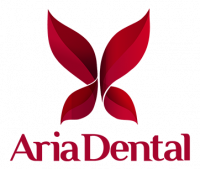

- Our Certified Holistic and Biological Dentist
- Our Personal Attention & Gentle Care
- Our Holistic, Integrative, Preventive, & Regenerative Approaches
- Our Outstanding Success Rate & Satisfied Patients
- Our Anesthesia & Sedation Options
- Our Affordable Services with Several Financial Options
- Our State-Of-The-Art Technologies and Modern Methods
Top 5-Star Cosmetic & Holistic Dentist
Dr. Maryam Horiyat
in Orange County, CA
Holistic & Integrative Treatments
To Request an Appointment
Please Call, or Text, or Book Online
Our Patients Are Saying
ExcellentBased on 234 reviews Trustindex verifies that the original source of the review is Google.
Trustindex verifies that the original source of the review is Google. Vivian Zitt2024-07-17The whole staff is so attentive, and caring to all my needs. The doctor was so patient and gentle. Bassila the assistant, was so nice to me. She brought me a blanket rolled me up in it because I was cold. Very good dental experience!!Trustindex verifies that the original source of the review is Google.
Vivian Zitt2024-07-17The whole staff is so attentive, and caring to all my needs. The doctor was so patient and gentle. Bassila the assistant, was so nice to me. She brought me a blanket rolled me up in it because I was cold. Very good dental experience!!Trustindex verifies that the original source of the review is Google. Kelsey Kappauf2024-07-16We love Aria and have had such a wonderful experience. Dr. Horiyat and her team approach clients with so much care and intention. Our son was very afraid of the dentist but everyone at Aria has been so wonderful with him and he now is fear free of going! We also feel very thankful that she cares about the overall health of the teeth and is not about quick fixes. ❤️Trustindex verifies that the original source of the review is Google.
Kelsey Kappauf2024-07-16We love Aria and have had such a wonderful experience. Dr. Horiyat and her team approach clients with so much care and intention. Our son was very afraid of the dentist but everyone at Aria has been so wonderful with him and he now is fear free of going! We also feel very thankful that she cares about the overall health of the teeth and is not about quick fixes. ❤️Trustindex verifies that the original source of the review is Google. tamanfaisal2024-07-14Very professional and skilled, top to bottom. Dr. Maryam Horiyat is so thorough and knowledgeable my family and I had a wonderful experience from our dental procedures. I highly recommend Aria Dental for anyone who loves to experience high-quality and holistic, dental care.Trustindex verifies that the original source of the review is Google.
tamanfaisal2024-07-14Very professional and skilled, top to bottom. Dr. Maryam Horiyat is so thorough and knowledgeable my family and I had a wonderful experience from our dental procedures. I highly recommend Aria Dental for anyone who loves to experience high-quality and holistic, dental care.Trustindex verifies that the original source of the review is Google. Tiana Sanchez2024-07-10Aria Dental has an incredible staff! Upon arrival, to check in, the staff are attentive, professional and caring. I researched several holistic dental offices and found Aria to uphold a level of service that I was looking for. I highly recommend them!Trustindex verifies that the original source of the review is Google.
Tiana Sanchez2024-07-10Aria Dental has an incredible staff! Upon arrival, to check in, the staff are attentive, professional and caring. I researched several holistic dental offices and found Aria to uphold a level of service that I was looking for. I highly recommend them!Trustindex verifies that the original source of the review is Google. Allen Dad2024-07-10This office is amazing! The structure and culture of office is top class and felt custom catered from beginning to end. My son is new patient to practice and want the best for my boy. The customer service from front office was very warm and caring. The assistants were very attentive and professional. What made this appointment a complete different experience for my family was a subject that has never been explained or overlook. Sleep Apnea!!! My son is 9 year old active boy. My beast!!! Recently I have notice major changes and have consulted with the best of the best about my son health. I was told this and that but just did not make sense and refused to drug my boy with meds. My consult with Dr Horiyat was for dental related services and had no idea Dr Horiyat also specialized in sleep apnea. After reviewing my son chart and doing her diagnosis she asked how is your son sleeping or doing at night? Some of questions started to make perfect sense and was intrigued to learn more about sleep health. After completing his home sleep study we find my son has obstructive sleep apnea. I don’t think many dentist talk about this due to lack of knowledge or just staying in the box of dentistry. Dr Horiyat is extremely knowledgeable and address all my concerns. I came in for routine dental and walked out proving a better quality of life for my son in finding a solution to his airway problems. Me and my 9 year old walked out with excitement. He said if this makes me a better soccer player I am in hahaha. We have started sleep appliances and instantly notice day and light difference in school in his attitude and he is killing it on the field. This review is way overdue. Aria Dental Dr Horiyat you guys rock and now my whole family will be patients as well!!!!Trustindex verifies that the original source of the review is Google.
Allen Dad2024-07-10This office is amazing! The structure and culture of office is top class and felt custom catered from beginning to end. My son is new patient to practice and want the best for my boy. The customer service from front office was very warm and caring. The assistants were very attentive and professional. What made this appointment a complete different experience for my family was a subject that has never been explained or overlook. Sleep Apnea!!! My son is 9 year old active boy. My beast!!! Recently I have notice major changes and have consulted with the best of the best about my son health. I was told this and that but just did not make sense and refused to drug my boy with meds. My consult with Dr Horiyat was for dental related services and had no idea Dr Horiyat also specialized in sleep apnea. After reviewing my son chart and doing her diagnosis she asked how is your son sleeping or doing at night? Some of questions started to make perfect sense and was intrigued to learn more about sleep health. After completing his home sleep study we find my son has obstructive sleep apnea. I don’t think many dentist talk about this due to lack of knowledge or just staying in the box of dentistry. Dr Horiyat is extremely knowledgeable and address all my concerns. I came in for routine dental and walked out proving a better quality of life for my son in finding a solution to his airway problems. Me and my 9 year old walked out with excitement. He said if this makes me a better soccer player I am in hahaha. We have started sleep appliances and instantly notice day and light difference in school in his attitude and he is killing it on the field. This review is way overdue. Aria Dental Dr Horiyat you guys rock and now my whole family will be patients as well!!!!Trustindex verifies that the original source of the review is Google. Hassiba Rashid2024-07-10I was looking for a painless cavity treatment and I was so happy to find Dr. Horiyat who could treat cavities using laser and ozone technology. Thank you so much Dr. Horiyat! Dr. Horiyat is knowledgeable and is an expert in her field. She stays up to date with the latest technologies regarding holistic dentistry and it shows at her practice. Her employees are also very friendly and treat patients like family.Trustindex verifies that the original source of the review is Google.
Hassiba Rashid2024-07-10I was looking for a painless cavity treatment and I was so happy to find Dr. Horiyat who could treat cavities using laser and ozone technology. Thank you so much Dr. Horiyat! Dr. Horiyat is knowledgeable and is an expert in her field. She stays up to date with the latest technologies regarding holistic dentistry and it shows at her practice. Her employees are also very friendly and treat patients like family.Trustindex verifies that the original source of the review is Google. Shima Amini2024-07-10My daughter got her braces there and also her sleep study and I cannot say how appreciative me and my husband are. She had such an amazing experience and she’s so excited about her new journey at Aria Dental. Thank you Dr. Horiyat for treating my daughter with passion.Trustindex verifies that the original source of the review is Google.
Shima Amini2024-07-10My daughter got her braces there and also her sleep study and I cannot say how appreciative me and my husband are. She had such an amazing experience and she’s so excited about her new journey at Aria Dental. Thank you Dr. Horiyat for treating my daughter with passion.Trustindex verifies that the original source of the review is Google. Keri Sukut2024-07-10Office is very friendly, knowledgeable, and efficient. State of the art equipment and thorough holistic approach.Trustindex verifies that the original source of the review is Google.
Keri Sukut2024-07-10Office is very friendly, knowledgeable, and efficient. State of the art equipment and thorough holistic approach.Trustindex verifies that the original source of the review is Google. Jordan Proper2024-07-09I cannot recommend Aria Dental enough. Every time I take myself or my family there I am more impressed. They have state of the art equipment that is safe/low radiation, the office is extremely organized and clean and they only use the safest materials for the mouth. I have complete confidence in Dr. Horyiat because she is constantly researching and learning. She follows up with me with research regarding any concerns I have. The cherry on top is her bedside manner, she has a natural maternal care for my kids when they are nervous and she is patient with me as an adult, she has no ego like most dentists do and is very respectful of your decisions. She is also willing to do research if she doesn’t have an answer, that is rare to find! I recommend her to everyone because she is a true biological dentist and the best in her field.
Jordan Proper2024-07-09I cannot recommend Aria Dental enough. Every time I take myself or my family there I am more impressed. They have state of the art equipment that is safe/low radiation, the office is extremely organized and clean and they only use the safest materials for the mouth. I have complete confidence in Dr. Horyiat because she is constantly researching and learning. She follows up with me with research regarding any concerns I have. The cherry on top is her bedside manner, she has a natural maternal care for my kids when they are nervous and she is patient with me as an adult, she has no ego like most dentists do and is very respectful of your decisions. She is also willing to do research if she doesn’t have an answer, that is rare to find! I recommend her to everyone because she is a true biological dentist and the best in her field.
Stop Gum Disease Before It's Too Late!
We proudly provide the highest level of biological care and offer hi-tech, modern, and advanced holistic & biological dental services: Family, Cosmetic, Preventive, Restorative, Reconstructive, and Surgical.



